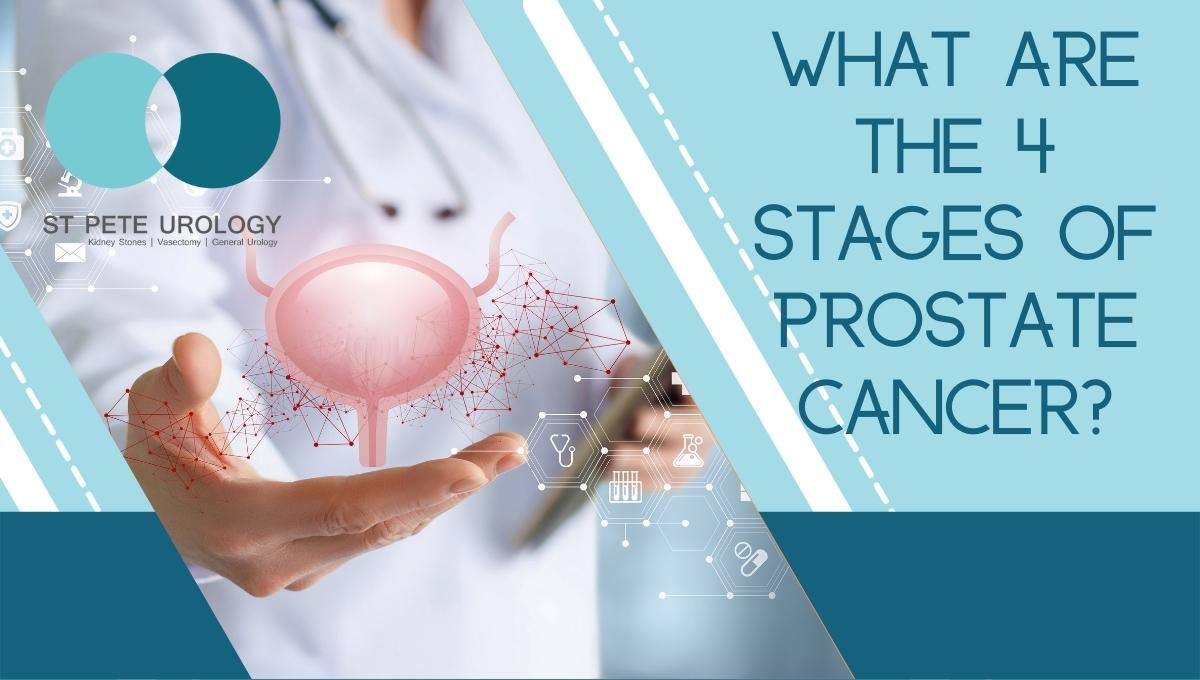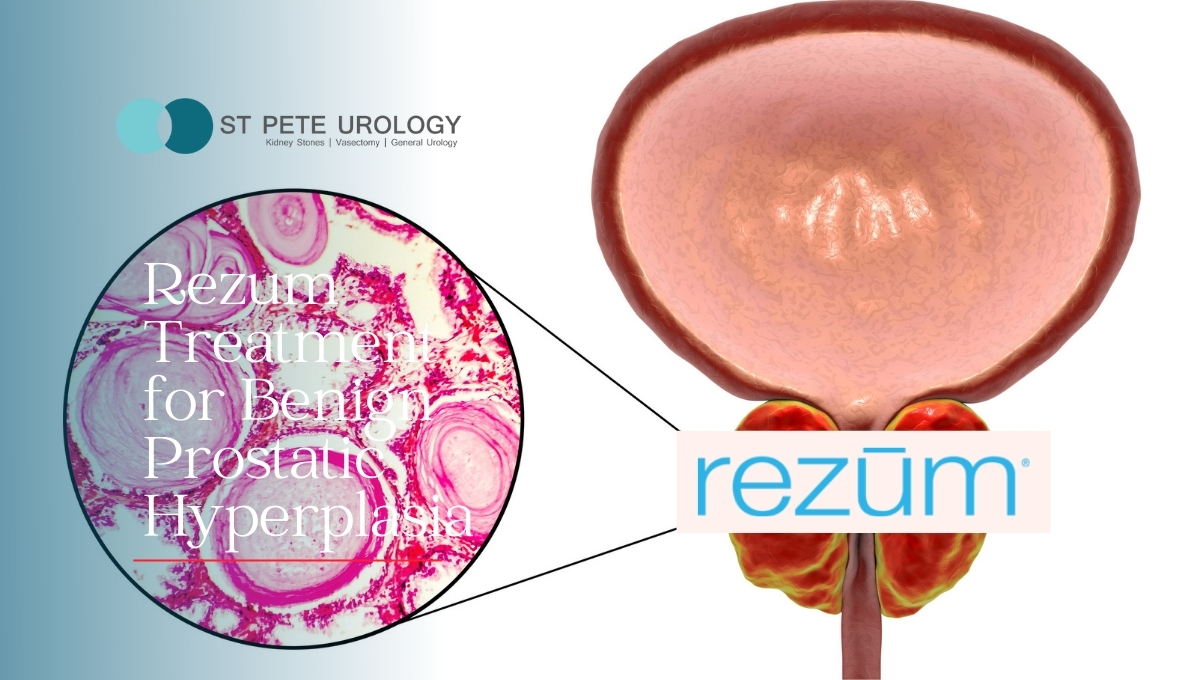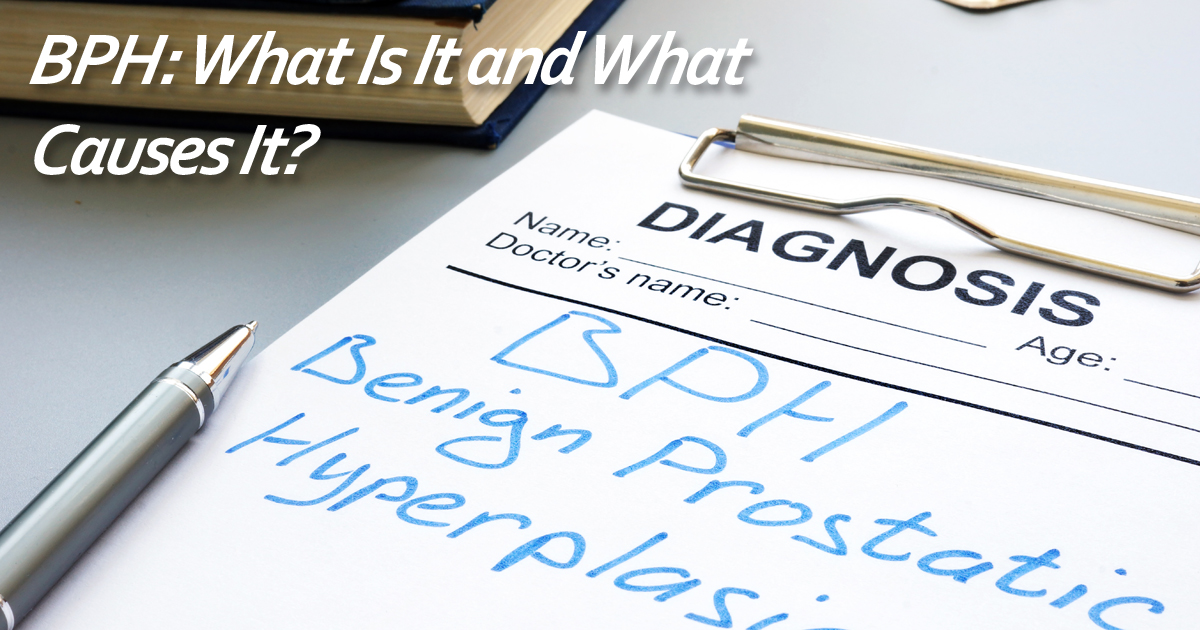Key takeaways
- Prostate cancer starts in the prostate gland, but can spread outside of it if not detected and treated early.
- To confirm a diagnosis of prostate cancer and assess the stage of the cancer, doctors will use tests such as the PSA test and DRE, as well as a biopsy, ultrasound, MRI, and CT scans.
- The cancer is staged based on the size and spread of the tumor, with Stage I being the least advanced and having a high survival rate.
 Prostate cancer starts and grows in the prostate gland, but may spread outside the prostate, particularly when not detected and treated early. As it grows and spreads away from the prostate, the tumor may invade nearby tissues and consequently get carried via lymph nodes and lymph vessels traveling to distant tissues.
Prostate cancer starts and grows in the prostate gland, but may spread outside the prostate, particularly when not detected and treated early. As it grows and spreads away from the prostate, the tumor may invade nearby tissues and consequently get carried via lymph nodes and lymph vessels traveling to distant tissues.
Grading of prostate cancer
Prostate cancer is primarily screened using the prostate-specific antigen (PSA) test and the digital rectal exam (DRE). And when screening tests give abnormal results, your physician will run further tests to confirm the diagnosis, grade the cells, and then assess the stage of the cancer.
To confirm the diagnosis, your doctor will order a prostate biopsy. The test involves obtaining a sample of tissue from the most affected areas of the prostate and having the cells examined by a pathologist to determine if they are cancerous. And since cancerous cells appear different from healthy cells, the biopsy helps to confirm the diagnosis.
The appearance of cells is also used to grade the cancer. Usually, the cells are classified using the Gleason system, which uses the numbers 1 to 5 to grade the patterns of cells seen in the tissue sample as the most common (primary) and the second most common (secondary) patterns of cells.
Cells that look much similar to normal cells are given a score of 1, and then the scores 2-4 are given an increasing order of difference from normal ones. Therefore a score of 4 represents cells that are more different and have a higher chance of uncontrolled replication than a score of 2. And a score of 5 is given to cells that are completely different from normal prostate cells.
The total Gleason score is obtained by adding the primary and secondary scores, with the least tally that indicates cancer being 6—a score that shows a low-grade, least aggressive cancer. A Gleason score of 7 indicates a medium-grade cancer, while tallies of 8, 9 or 10 show a high-grade cancer.
Generally, the higher the score, the more the cancer cells appear different from normal prostate cells, and the more aggressive the cancer. Aggressiveness of a cancer means it has more chances of spreading to other areas of the body.
Today, the Gleason score is used alongside the grade group score to help stage prostate cancer. Other tests that help assessing the stage of prostate cancer include Transrectal ultrasound, prostate-specific antigen (PSA), MRI of the prostate, abdominal and pelvic CT scan to detect the potential spread of the cancer, nuclear scans to detect spread to bones, and surgical biopsy to check lymph nodes of your pelvis for the tumor.
So what are the stages of prostate cancer?
Staging of a prostate cancer means classifying the cancer according to how far it has spread and its effects on the prostate. The staging system helps in tailoring treatment to properly address the tumor.
To determine the stage of a cancer, your doctor will use a number of indicators. For instance, your doctor will use the TNM system, which has three different aspects. Tumor (T) describes the size of the main area of the cancer, nodes (N) identifies whether the cancer has spread to the lymph nodes and to what extent, while metastasis (M) describes how far from the prostate the cancer has spread.
Similarly, your physician will use the Gleason score and the grade group score to stage the cancer. The higher the Gleason or grade group score, the more aggressive and widely spread the cancer. Plus, your doctor will use the PSA level, ultrasound, MRI, CT scans, nuclear scans, and surgery to correctly stage the cancer.
- Stage I Prostate Cancer
The least advanced prostate cancer, usually small and not yet spread beyond the prostate, is called stage I prostate cancer. It is characterized by a PSA level that’s less than10 ng/mL, a Gleason score of 6, and a grade group score of 1. The cancer has a 5-year survival rate of almost 100 percent.
Stage I prostate cancer is managed by active surveillance for nearly all patients with a Gleason score of 6, unless the patient is unwilling or unable to undergo additional biopsies or has high-volume disease.
Active surveillance means your doctor monitors the tumor over time to check whether further treatment is necessary. Apart from active surveillance, stage I cancer may be treated using radical prostatectomy—the surgical removal of the prostate; or radiation therapy, either alone or with prostate removal.
- State II Prostate Cancer
The cancer is still restricted to the prostate and has not spread to the lymph nodes or other parts of the body. Also, it may or may not be felt during a prostate exam, though it may appear on ultrasound imaging.
Stage II prostate cancer has a PSA score of less than 20ng/mL, but is further divided into three phases depending on Gleason scores and grade group scores. Stage IIA has a Gleason score of 6 or less and grade group score of 1, stage IIB has a Gleason score of 7 (3+4) and grade group score of 2, while stage IIC has a Gleason score of 7 or 8 and grade group score of 3 or 4.
For stages IIA and IIB, active surveillance may be adequate. But, in some cases, doctors recommend removing the prostate together with the surrounding lymph nodes in order to prevent further spread of the cancer. Your doctor may also consider radiation therapy, in the form of external beam or brachytherapy.
For stage IIC, a combination of hormone therapy with radiation therapy in select patients—group grade 3 or those with more than 50-percent positive biopsy cores, usually gives great results.
- Stage III prostate cancer
At this stage, the cancer may or may not have spread outside the prostate. If the tumor hasn’t spread outside the prostate, the 5-year survival rate still remains close to 100-percent. But when the tumor has spread, the survival rate is reduced.
Stage III prostate cancer is divided into three sub-groups: IIIA, IIIB and IIIC. In stage IIIA, the cancer hasn’t spread outside the prostate, has a PSA level of 20ng/mL or higher, a Gleason score of 8 or less, and grade group score of 1 to 4.
Stage IIIB has spread outside the prostate and may have reached the seminal vesicles or the surrounding tissue, but it hasn’t reached the lymph nodes or other parts of the body. It may have any PSA level, but a Gleason score of 9 or 10, and grade group score of 5.
Stage IIIC prostate cancer may or may not have spread to the lymph nodes or other nearby organs. It has any PSA level, but a Gleason score of 9 or 10 and a grade group score of 5.
Stage III prostate cancer is treated through a combination of external beam radiation and hormone therapy. In some cases, brachytherapy or radical prostatectomy—with removal of pelvic lymph nodes—is considered. Active surveillance isn’t used for stage III prostate cancer because there is a higher risk of disease progression if not treated.
- Stage IV prostate cancer
This is the most advanced form of prostate cancer. The cancer has typically spread to distant parts of the body and affected several organs. Stage IV prostate cancer is divided into IVA and IVB. Stage IVA tumor has spread to nearby lymph nodes but hasn’t reached other areas of the body. Stage IVB tumor has reached distant lymph nodes and many other areas including bones or organs.
The treatments for stage IV prostate cancer include hormone therapy, chemotherapy, external beam radiation, targeted radiation and potentially prostate surgery.
Effective, state-of-the-art treatment
Successful treatment of prostate cancer depends on regular screening to increase the chances of early detection, correct grading of the cancerous cells, and proper staging of the cancer. Early detection ensures a higher survival rate just as the right staging ensures that the treatment administered is safe and effective.
At St Pete Urology, after a diagnosis, our skilled and experienced urologists select the right tests to determine the stage of the cancer. Then through a multidisciplinary approach, we provide a tailored treatment with the highest potential of achieving the best possible outcomes.
Call us today to book your screening, diagnosis and treatment of prostate-related problems. For more information on prostate cancer and other urological disorders, visit https://stpeteurology.com/
References
- “Prostate Cancer.” Mayo Clinic, Mayo Foundation for Medical Education and Research, mayoclinic.org/diseases-conditions/prostate-cancer/symptoms-causes/syc-20353087
- “Prostate Cancer Diagnosis.” Cancer.Net, American Society of Clinical Oncology, www.cancer.net/cancer-types/prostate-cancer/diagnosis
- “Staging.” American Cancer Society, www.cancer.org/treatment/understanding-your-diagnosis/staging.html



 The prostate is a tiny, walnut-shaped gland in the pelvis. Located near the bladder and felt through a digital rectal exam, the prostate produces the fluid that transports and nourishes sperm. The fluid—called seminal fluid—is squeezed out via the urethra during ejaculation.
The prostate is a tiny, walnut-shaped gland in the pelvis. Located near the bladder and felt through a digital rectal exam, the prostate produces the fluid that transports and nourishes sperm. The fluid—called seminal fluid—is squeezed out via the urethra during ejaculation.

 Prostate problems are common in men over 40. The prostate, a tiny walnut-sized gland found only in males, surrounds the urethra and produces a thick, white fluid that mixes with sperm to form semen. Though smaller early in life, the gland grows bigger with age and can sometimes become enlarged or swollen by conditions such as prostate enlargement,
Prostate problems are common in men over 40. The prostate, a tiny walnut-sized gland found only in males, surrounds the urethra and produces a thick, white fluid that mixes with sperm to form semen. Though smaller early in life, the gland grows bigger with age and can sometimes become enlarged or swollen by conditions such as prostate enlargement, 
 Prostate health is an important part of overall health for men. The prostate is a walnut-sized gland situated between the bladder and the penis. The urethra, the tube through which urine exits the body, runs through the prostate. One of the prostate’s main functions is producing a fluid that nourishes and protects sperm. For men, the prostate is an important part of both the urinary and reproductive systems.
Prostate health is an important part of overall health for men. The prostate is a walnut-sized gland situated between the bladder and the penis. The urethra, the tube through which urine exits the body, runs through the prostate. One of the prostate’s main functions is producing a fluid that nourishes and protects sperm. For men, the prostate is an important part of both the urinary and reproductive systems.
 BPH is the abbreviation for benign prostatic hyperplasia, also called
BPH is the abbreviation for benign prostatic hyperplasia, also called 